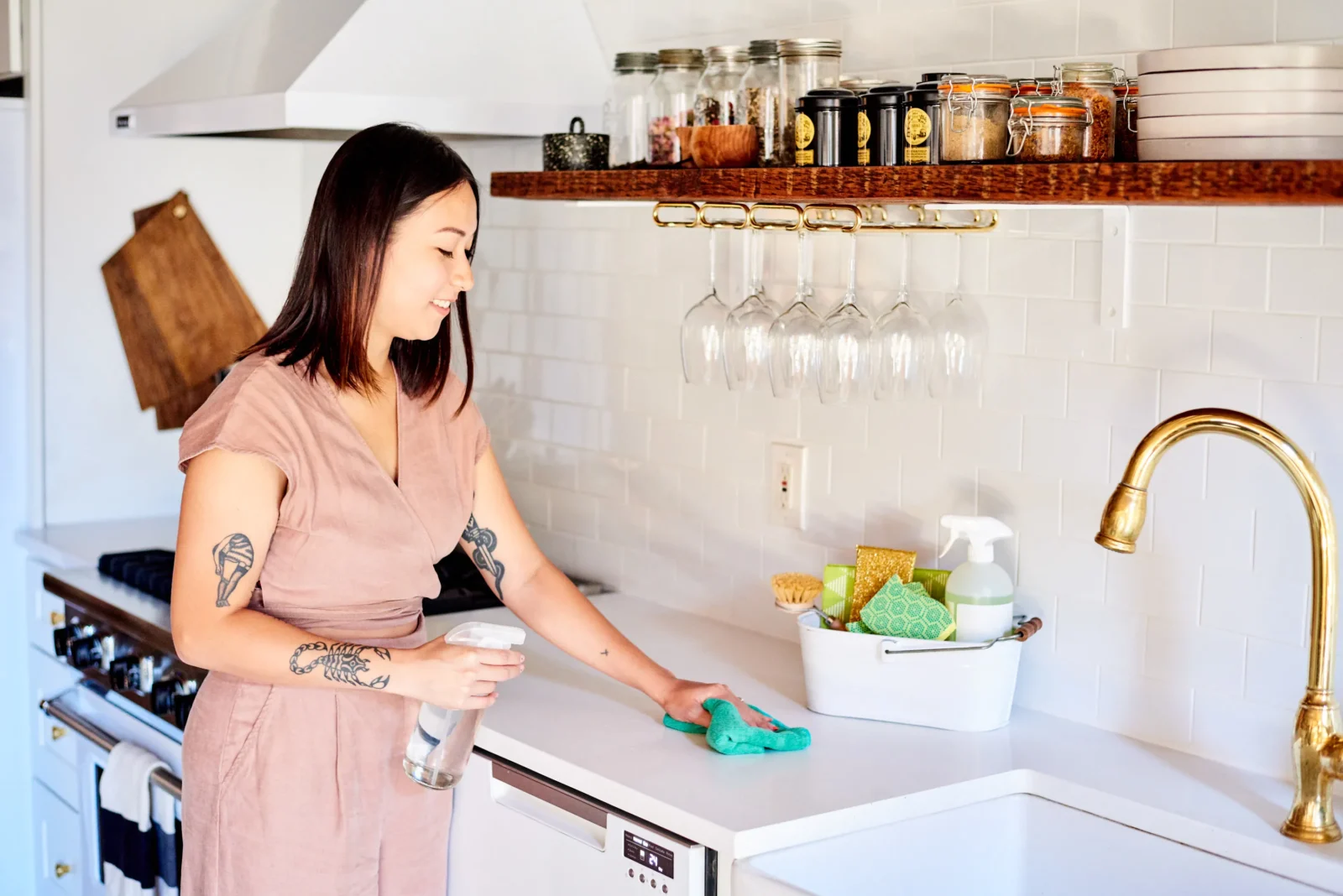The heart of the home, the kitchen, is where we gather to cook, eat, and share moments. Maintaining a clean kitchen is paramount, not just for the aesthetic appeal but for our health and productivity. A spotless cooking space prevents the spread of bacteria and germs, contributes to better food hygiene, and makes the cooking process more efficient and enjoyable. This comprehensive guide will arm you with expert tips and insights to keep your kitchen gleaming, showcasing the importance of cleanliness in the culinary domain.
Establish a Cleaning Routine
The cornerstone of a spotless kitchen is a regular cleaning schedule. Without it, tasks pile up, making the job seem daunting. Tailor a routine that fits your lifestyle; daily tasks might include washing dishes and wiping down surfaces, while weekly tasks could focus on mopping floors and cleaning appliances. Set reminders or create a checklist to stay on track. This proactive approach not only keeps your kitchen consistently clean but also significantly reduces the time and effort required in long-term upkeep.if you’re having issues with basic routing heroine professional house cleaning services should be your first step and not reading this article.
Declutter Countertops and Cabinets
A cluttered kitchen can hinder your cooking experience, making it difficult to find necessary items and clean effectively. Start by purging unused or rarely used gadgets, utensils, and expired food. Organize your cabinets and countertops to keep them functional and aesthetically pleasing. Use shelf organizers, spice racks, and clear containers to maximize space and visibility. This decluttering process not only enhances the appearance of your kitchen but also streamlines your cooking and cleaning routine.
Clean as You Cook

Adopting the habit of cleaning as you cook can significantly minimize the mess awaiting you post-meal. Start with a clean workspace, and as you prepare your meal, wash utensils, chopping boards, and bowls when you’re done using them. Wipe down spills and splatters immediately. This method not only keeps your kitchen tidy but also makes the post-cooking cleanup much quicker and easier, leaving you more time to enjoy your meal and less time dreading the cleanup.
Focus on High-Touch Surfaces
High-touch surfaces in the kitchen, such as handles, knobs, and switches, are often overlooked yet are hotspots for germs and bacteria. Regularly disinfect these areas with an appropriate cleaner to prevent the spread of illness. Paying special attention to these surfaces during your cleaning routine can significantly reduce the risk of contamination, ensuring a healthier cooking environment for you and your family.
Mastering the Art of Deep Cleaning
Deep cleaning goes beyond the daily wipe-down, addressing areas that accumulate grime over time. Schedule a monthly or quarterly deep clean to tackle appliances, countertops, and floors. For appliances, remove all parts that can be cleaned separately. Use a mixture of baking soda and water for tough stains. Countertops may require specific cleaners based on their material. Lastly, use a suitable cleaner for your floor type, ensuring a thorough clean without damaging the surface.
Harness the Power of Natural Cleaners
Eco-friendly cleaning products are not only better for the environment but also safer for your family. Many effective natural cleaners can be made from common household ingredients such as vinegar, baking soda, and lemon. For example, a mixture of vinegar and water works wonders for windows and surfaces, while baking soda is great for scrubbing away tough stains. These natural alternatives are cost-effective, reduce chemical exposure, and are gentle on the surfaces in your kitchen.
Tackle Tough Stains and Grease

Stubborn stains and grease buildup can be the bane of any kitchen cleaning effort. For grease, a solution of dish soap and warm water is effective, as dish soap is designed to break down oils. For tough stains on surfaces like countertops or inside ovens, a paste made from baking soda and water, left to sit before scrubbing, can be surprisingly effective. Always test a small area first to ensure there’s no damage to surfaces.
Don’t Forget the Forgotten Areas
Areas like behind appliances, under the sink, and the tops of cabinets often go unnoticed in regular cleaning routines but can accumulate dust and grime. Periodically moving appliances to clean behind and beneath them, as well as wiping down less accessible spots, can prevent these areas from becoming breeding grounds for pests and bacteria. This thorough approach ensures a deeper clean and a healthier kitchen environment.
Maintain Your Kitchen Tools and Equipment
Proper maintenance of kitchen tools and appliances extends their life and ensures they remain hygienic for food preparation. Regularly sharpen knives, descale kettles and coffee makers, and clean the dishwasher filter. For cookware, follow the manufacturer’s instructions to avoid damage and keep them in good condition. This maintenance not only contributes to a cleaner kitchen but also improves the functionality and efficiency of your cooking tools.
Adopt Healthy Habits for a Cleaner Kitchen

A cleaner kitchen starts with healthier habits. Proper food storage, immediate handling of spills, and regular waste disposal can significantly reduce mess and contamination risks. Implementing habits like rinsing dishes immediately after use, separating waste for recycling, and storing food in airtight containers can make a big difference in keeping your kitchen clean and organized.
Conclusion
Maintaining a spotless kitchen is a commitment that pays off in health, efficiency, and enjoyment of your cooking space. By establishing a cleaning routine, decluttering, cleaning as you go, and paying attention to both high-traffic areas and often overlooked spots, you can achieve and maintain a pristine kitchen. Embrace the use of natural cleaners for an eco-friendly approach, tackle tough stains head-on, and ensure your kitchen tools and equipment are well-maintained. Adopting these expert tips will not only lead to a cleaner kitchen but also enhance your overall cooking experience. Let’s embrace these practices for a consistently spotless cooking space, making our kitchens a source of joy and health.
